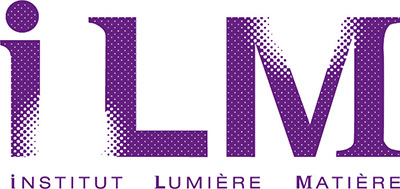AmMoniAQ: Ammonia (NH3) monitoring for Air Quality
- Admin
- Feb 13, 2024
- 3 min read
Updated: Feb 24
The AmMoniAQ (Ammonia Monitoring for Air Quality) project aims to develop a high-performance and miniaturized analyzer for the precise quantification of ammonia in complex agricultural environment.
This project is carried by the company Hemera and associates the company Aryballe and the academic laboratory ILM (Institut Lumière Matière), in partnership with ITAVI and ValSoleil.
It is supported by the Auvergne-Rhône-Alpes region and Axelera.

The main source of Ammonia (NH3)
Ammonia (NH3) can be produced through biological processes such as the decomposition of organic matter by bacteria, which releases ammonia as a byproduct. It can be found in animal waste such as urine and manure. That’s why rejection of Ammonia are important particularly in Confined Animal feeding Operations (CAFOs) where large numbers of animals are kept in small spaces. In 2018, 94% of Ammonia emissions in France come from agriculture; 2/3 are due to livestock and 16% of the 2/3 for the poultry sector.
The issues of the poultry sector
The environmental issues
A set of international regulations has been put in place since the late 1990s to reduce Ammonia emissions:
In france, there is the National Plan for the Reduction of Air Pollutant Emissions which foresees a reduction of Ammonia emissions by 30% by 2030. Check the PDF here
Ammonia favors the formation of fine particles because it is a sticky molecule on which, for example, dust can agglomerate. Moreover, once emitted into the atmosphere, Ammonia can combine with Nitrogen Oxides (NOx) and Sulfur compounds (SOx) from industrial activities and road traffic to form Particulate Matter (PM).
Dangerous work environment
Ammonia can cause irritation of the respiratory system, the skin, the eyes and mucous membrane. It can displace oxygen in the air and it is highly flammable. For the health of workers, the French Institut National de Recherche et de Sécurité (INRS) has established Time Weighted Average and Occupational Exposure Limits fo humans (respectively TWA and OEL) in the workplace environment. The TWA is 10 ppm for 8 hours and the OEL is 20 ppm for 15 minutes.
Underdevelopment of animals
Ammonia can have several effects on animal health and development:
• Respiratory problems
• Impaired nutrient absorption
• Irritation of mucous membranes
• Reduced appetite
• Altered metabolism
Underdevelopment and stunted growth of animal can have several negative effects, including reduced productivity, increased susceptibility to disease, and decreased profitability for farmers. Therefore, it is essential to minimize Ammonia exposure and promote animal health and development.

Equipping poultry buildings with Ammonia concentration sensors for continuous measurements will help meet the regulatory and technical issues mentioned above
Metrology, a solution to meet regulatory and technical challenges
Currently, electrochemical sensors are the most used to measure the concentration of Ammonia but they are strongly influenced by the ambien conditions (pressure, humidity and temperature) and chemical interference in the presence of molecules of the same nature as the gas under test. In addition, their life span is generally limited to 1 or 2 years.
To meet this regulatory and technical challenges, Hemera has joined forces with Aryballe and the ILM to design a sensor for continuous and quantitative measurement of Ammonia that is reliable and non-sensitive to interference at a moderate cost.
The contributors of this project:
This project is funded by the Auvergne-Rhône-Alpes region and supported by Axelera














